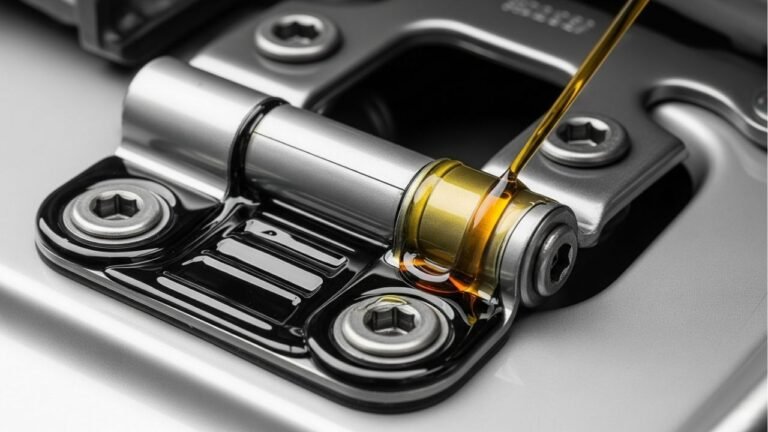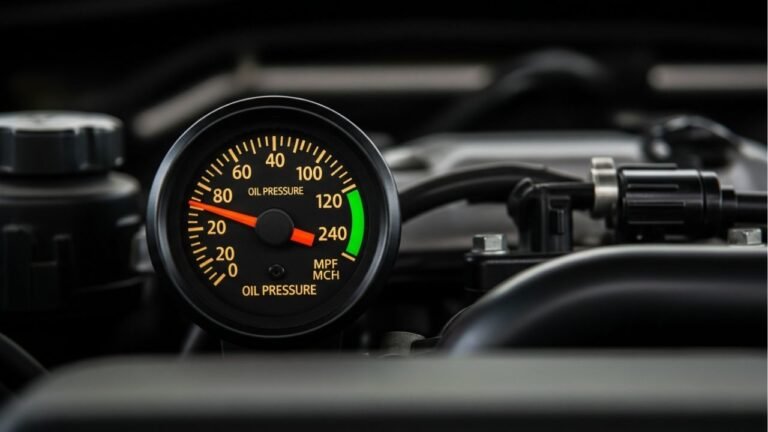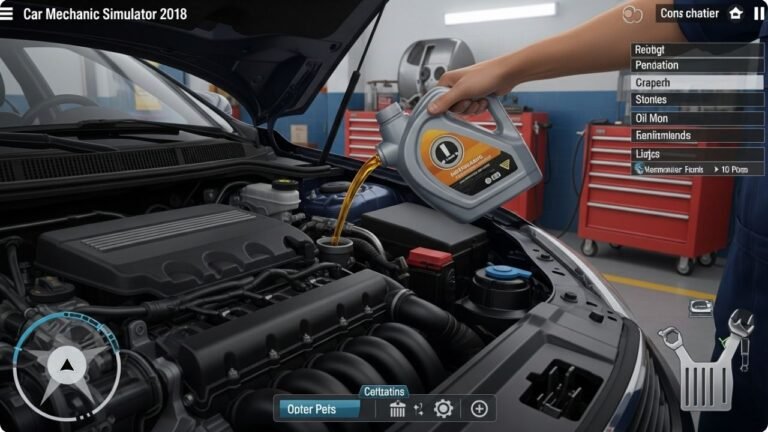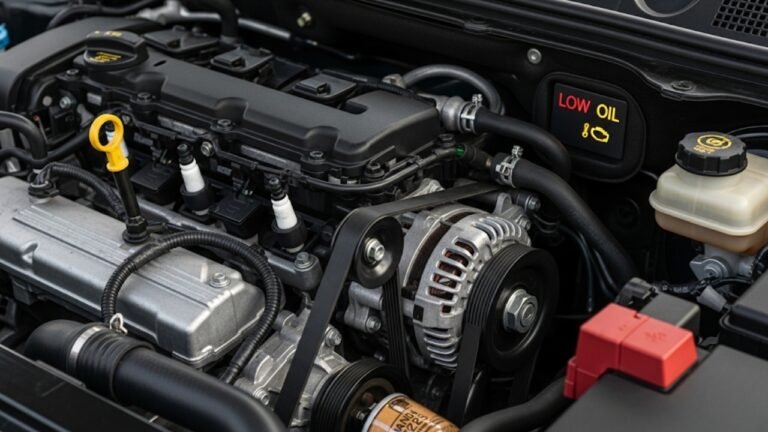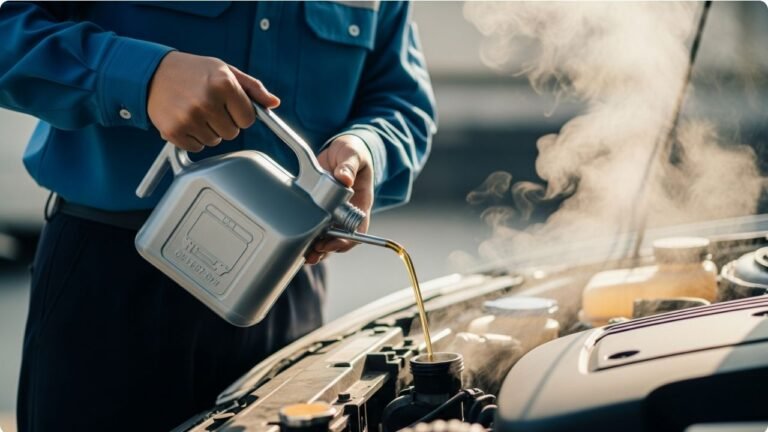Car Oil Seal Leak: Causes, Signs, Fixes
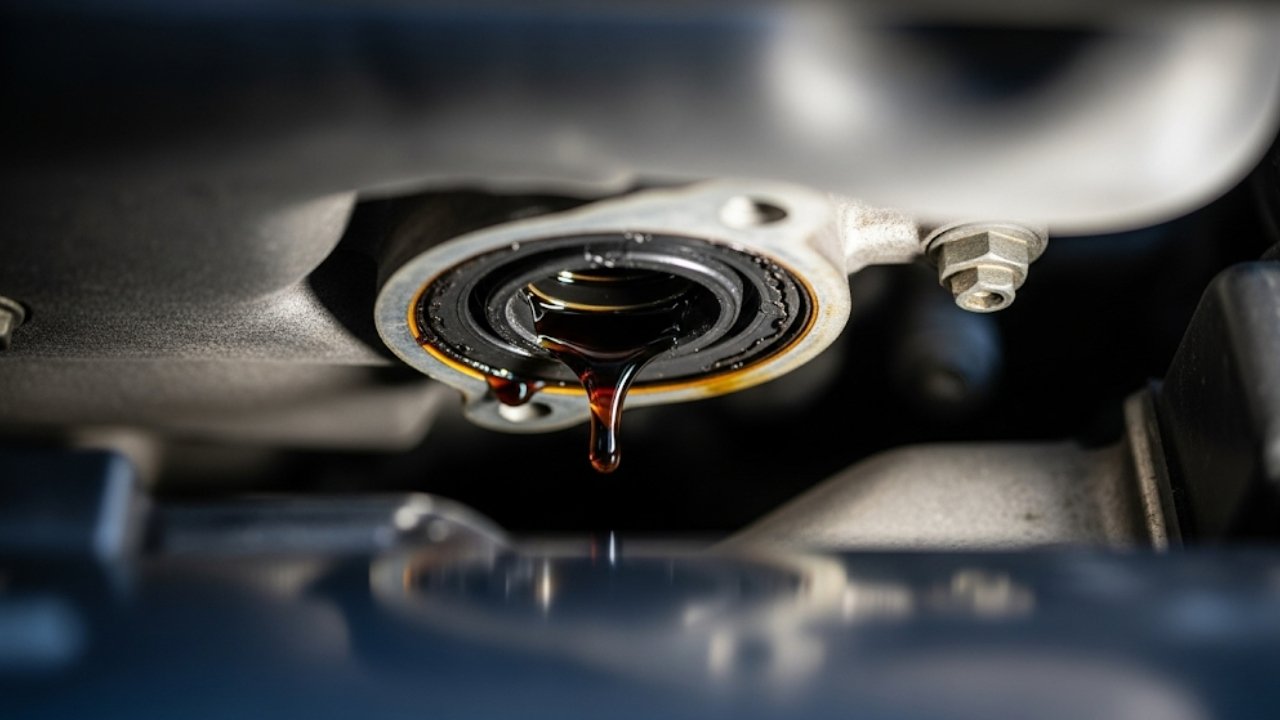
You’re walking to your car, coffee in hand, mind half on your to-do list and half on the weather. Then you spot it — that little puddle underneath your car. It’s dark. Slick. Oily. Your heart skips a beat. “Is my car dying?” you wonder.
That’s how it starts for many of us. A tiny spot on the driveway that leads to an unexpected headache. The culprit? Often, it’s a car oil seal leak — a small issue that, if ignored, can turn into a much bigger one.
I’ve been there. A few years ago, I drove an older Honda Civic that started leaking oil after winter. I thought it was nothing. A few weeks later, my engine started making weird noises. The mechanic? He pointed at the oil seal. “That’s your problem,” he said. And just like that, I became an unintentional student of oil leaks.
So, let’s dive into it — not just the technical stuff, but also what it feels like, what to expect, and how to handle a car oil seal leak like a pro.
In This Article
- 1 What Is a Car Oil Seal and Why Does It Matter?
- 2 What Causes a Car Oil Seal Leak?
- 3 Common Signs You Have a Car Oil Seal Leak
- 4 The Real Risks of Ignoring a Car Oil Seal Leak
- 5 How to Identify the Source of the Oil Leak
- 6 Can You Drive With a Car Oil Seal Leak?
- 7 Repairing a Car Oil Seal Leak: What Are Your Options?
- 8 How Much Does It Cost to Fix a Car Oil Seal Leak?
- 9 Preventing Future Car Oil Seal Leaks
- 10 Frequently Asked Questions About Car Oil Seal Leaks
- 10.1 1. How long can I drive with a car oil seal leak?
- 10.2 2. Can a car oil seal leak cause engine failure?
- 10.3 3. What’s the difference between an oil leak and a blown gasket?
- 10.4 4. Will synthetic oil cause seals to leak?
- 10.5 5. Can a car pass inspection with an oil seal leak?
- 10.6 6. How can I tell if the rear main seal is leaking?
- 10.7 7. Are oil seal leaks covered by warranty?
- 10.8 8. Is it worth fixing an oil seal leak on an old car?
- 11 Final Thoughts: Don’t Ignore the Little Leaks
What Is a Car Oil Seal and Why Does It Matter?

Here’s a quick look at common oil seals in your car:
| Oil Seal Name | Location | Main Purpose |
|---|---|---|
| Crankshaft Seal | Front and rear of engine crank | Seals oil inside crankcase |
| Camshaft Seal | Near the cylinder head | Prevents oil leaks around the camshaft |
| Valve Cover Gasket | On top of engine | Stops oil from leaking from the top |
| Oil Pan Gasket | Bottom of the engine | Prevents leaks from the oil sump/pan |
| Transmission Output Seal | Driveshaft connection | Keeps oil inside the transmission system |
These seals face constant pressure, heat, and movement. Over time, they wear out. And when they do, you get a car oil seal leak — something you don’t want to ignore.
What Causes a Car Oil Seal Leak?
If you’ve ever dealt with a leaky faucet at home, you know things wear down. The same goes for car parts. Let’s break down the common reasons oil seals give up:
-
Aging rubber: Oil seals are made of rubber. Over time, they dry out, crack, and shrink.
-
Heat cycles: Engines heat up and cool down daily. This expands and contracts seals until they lose their grip.
-
High mileage: Cars driven over 100,000 miles are more likely to suffer from oil seal wear.
-
Poor maintenance: Skipping oil changes or using the wrong oil type speeds up seal deterioration.
-
Dirty oil: Contaminated or old oil can corrode rubber seals and weaken their structure.
-
Engine pressure issues: If crankcase pressure builds up (from blocked PCV valves), it forces oil out of weak spots.
-
Accidents or poor installations: Improperly installed or bumped seals often fail early.
Here’s a pro tip from experience: If your oil leak starts after an oil change or engine repair, it might be a seal that wasn’t aligned properly.
Common Signs You Have a Car Oil Seal Leak
Now let’s talk symptoms. A car oil seal leak doesn’t shout — it whispers. That’s why many car owners miss the early clues. But your car is always trying to tell you something.
Here’s how to listen:
-
Oil spots on the driveway: Classic clue. Look for dark brown or black puddles where you park.
-
Burning oil smell: Oil leaking onto hot engine parts will burn and smell smoky.
-
Low oil levels: If you’re topping off oil often, something is wrong. A seal might be the reason.
-
Smoke from the engine bay: Especially right after driving, leaking oil on exhaust pipes can smoke.
-
Oily engine parts: Pop the hood and look around seals. If you see gunk or wet areas, you may have a leak.
-
Poor engine performance: Low oil can cause rough idling, sluggish power, or even overheating.
One time I ignored the burning smell and blamed it on city traffic. Turns out, the rear crankshaft seal was leaking, and the oil was frying on the exhaust. If I had caught it sooner, I’d have saved a few hundred bucks in repairs.
The Real Risks of Ignoring a Car Oil Seal Leak
“Can’t I just keep topping up the oil?” Sure, you can. But should you? No.
Ignoring a car oil seal leak is like putting duct tape over a hole in your roof — it’s only temporary, and the damage keeps growing underneath.
Let’s look at the risks:
-
Engine damage: Oil is your engine’s blood. If it leaks out, parts wear, grind, and eventually fail.
-
Fire hazard: Leaking oil on hot parts can ignite, especially near the exhaust manifold.
-
Environmental harm: Oil leaks leave toxic puddles that harm pets, lawns, and local water systems.
-
Expensive repairs: A small $20 seal leak can turn into a $2000 engine rebuild if neglected.
-
Failed emissions: Oil burning from leaks can cause your car to fail a smog test.
-
Transmission issues: Some oil seals protect the transmission too. A leak there can cause gear slipping.
I’ve seen this firsthand. A friend had a Subaru that leaked oil slowly for months. It finally threw a rod on the highway. The culprit? A $15 camshaft seal that nobody bothered to fix.
How to Identify the Source of the Oil Leak
Not every oil leak is from a seal — but many are. So how do you know? You’ll need a bit of detective work. No trench coat required, just a flashlight and paper towels.
Here’s how to do it:
1. Check under the car
Lie down with a flashlight and look at the oil pan, rear of the engine, and around the wheels. Wet, oily spots may show you the direction of the leak.
2. Use UV dye
You can add a UV oil dye to your engine oil and run the car. After 15–30 minutes, use a UV light to track the leak. It glows bright green where it escapes.
3. Inspect seals and gaskets
Look at areas around the crankshaft, camshaft, and valve covers. Are they coated in oil? Do they have dust stuck to moist spots?
4. Clean and monitor
Clean the suspected area with engine degreaser. Drive for a day. If the leak reappears, you’ve found your culprit.
5. Use talcum powder
A neat old-school trick: spray talcum powder around suspected seals. Oil will leave a visible trail.
Can You Drive With a Car Oil Seal Leak?
Here’s the short answer: Yes, but only for a while — and only if it’s minor.
If it’s a small drip and your oil level is stable, you can monitor and manage it while you plan a repair. But if the leak is fast, burning, or affecting performance, don’t risk it.
Here’s when you shouldn’t drive:
-
Oil level drops below the safe mark.
-
You see smoke under the hood.
-
There’s a puddle forming every day.
-
The check engine or oil light comes on.
Driving with a bad car oil seal leak is like jogging on a sprained ankle. You can do it, but you’re gambling on a bigger injury.
Repairing a Car Oil Seal Leak: What Are Your Options?
Once you’ve identified a car oil seal leak, the next question is: How do you fix it? The answer depends on where the leak is, how bad it is, and whether you want to fix it yourself or visit a mechanic.
Option 1: Stop-Leak Additives
These are chemical solutions you pour into your oil. They swell the rubber seals temporarily, helping them seal better.
-
Pros: Cheap, easy, no tools needed.
-
Cons: Temporary fix, won’t work for torn or severely cracked seals.
Tip: Products like BlueDevil or Lucas Engine Stop Leak are decent for slow leaks.
Option 2: DIY Seal Replacement
If you’re handy and love a Saturday project, you can change some seals yourself — especially valve cover gaskets or oil pan gaskets.
-
Tools Needed: Socket wrench set, seal puller, gasket scraper, torque wrench.
-
Time Required: 1–4 hours depending on seal location.
-
Risk: Moderate. If done wrong, you could cause more leaks or damage.
Personal Note: I once replaced a valve cover gasket on my Nissan Altima in my driveway. Took 2 hours, cost under $30. Felt like a champ afterward!
Option 3: Professional Mechanic
If the leak is from a rear main seal or front crankshaft seal, it usually requires removing the transmission or timing cover — which is a job for pros.
-
Pros: Guaranteed fix, no hassle.
-
Cons: Labor is expensive, especially for hard-to-reach seals.
How Much Does It Cost to Fix a Car Oil Seal Leak?
Here’s a breakdown of typical repair costs (USD) depending on the type of seal:
| Seal Type | DIY Cost | Mechanic Cost |
|---|---|---|
| Valve Cover Gasket | $20 – $50 | $100 – $300 |
| Oil Pan Gasket | $30 – $60 | $200 – $400 |
| Front Crankshaft Seal | $20 – $40 | $300 – $700 |
| Rear Main Seal | $25 – $50 | $500 – $1500 |
| Camshaft Seal | $15 – $30 | $200 – $500 |
Reminder: Most of the cost comes from labor. The seals themselves are cheap — usually under $50 — but getting to them can take hours.
Preventing Future Car Oil Seal Leaks
After fixing a leak, the goal is to make sure it doesn’t happen again soon. Prevention is your best tool.
Here are simple habits to keep your seals in great shape:
-
✅ Change your oil on time
Fresh oil keeps seals lubricated and soft. -
✅ Use the right type of oil
Follow your car’s manual. Wrong viscosity can stress seals. -
✅ Avoid engine overheating
Heat damages rubber. Keep your cooling system healthy. -
✅ Check crankcase pressure
A clogged PCV valve can cause pressure buildup, pushing oil out. -
✅ Use quality oil filters
Cheap filters can cause leaks by restricting flow or allowing backpressure. -
✅ Store car properly in winter
Cold starts are tough on old seals. Let the car warm up gently.
If your car sits for long periods, consider adding a seal conditioner to your oil every 6 months. It’s a cheap way to extend seal life.
Frequently Asked Questions About Car Oil Seal Leaks
1. How long can I drive with a car oil seal leak?
It depends on the severity. Minor leaks may be okay for a few days or weeks with close monitoring. But heavy leaks should be fixed ASAP to avoid engine damage.
2. Can a car oil seal leak cause engine failure?
Yes. If oil runs too low or leaks into the wrong parts of the engine, it can cause overheating, wear, or full engine seizure.
3. What’s the difference between an oil leak and a blown gasket?
A leak from a seal is usually slow and from a small part like a crank or cam seal. A blown gasket (like the head gasket) can cause coolant-oil mixing, overheating, and smoke — it’s more serious.
4. Will synthetic oil cause seals to leak?
Not exactly. But switching from conventional to synthetic oil may expose existing weak seals due to its smaller molecules. It doesn’t cause new leaks, but it can find old ones faster.
5. Can a car pass inspection with an oil seal leak?
If it’s a minor drip, yes. But if oil is visibly dripping or causing emissions issues, it may fail inspection in strict states like California or New York.
6. How can I tell if the rear main seal is leaking?
Look under the car between the engine and transmission. If oil drips from the bell housing or there’s oil on the flywheel, the rear main seal may be the issue.
7. Are oil seal leaks covered by warranty?
If your car is under a powertrain warranty, then yes — oil seals and gaskets are usually covered. Always read the fine print.
8. Is it worth fixing an oil seal leak on an old car?
If the repair cost is more than the value of the car, consider just maintaining oil levels until the car gives out — unless safety is compromised.
Final Thoughts: Don’t Ignore the Little Leaks
A car oil seal leak isn’t just a mechanical issue — it’s a warning sign. It’s your car telling you it needs help, like a tired friend dropping subtle hints.
And the truth is, you don’t need to be a mechanic to understand it. With a little attention, regular maintenance, and the willingness to ask questions, you can avoid major repairs and drive with peace of mind.
Remember my Civic? It leaked, it smoked, and it taught me one important lesson: small leaks become big problems when ignored. But handled early, they’re just a tiny blip on your driving journey.
So if you ever see that puddle, smell that burnt oil, or notice that drip on your engine — don’t panic. Breathe, check it out, and act. Your car will thank you later.

